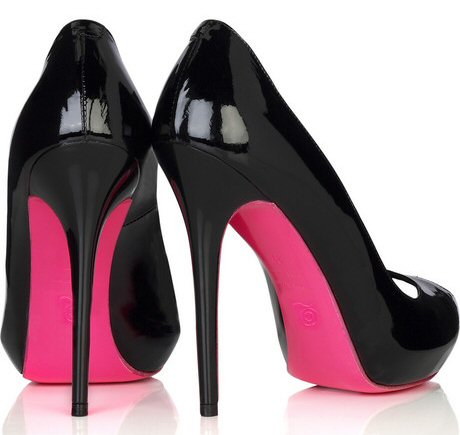Women find themselves in all sorts of trappings: the silky, smooth comfort of an evening dress; the perfectly board-ironed appeal of a hairdo; and the sensual application of colour to pouting lips. Lately, the most culturally relevant part of a woman’s wardrobe is undoubtedly the stiletto, and it has made its way into bridal gear.
Countering the natural functionality of the foot, stilettos raise and shift a woman’s figure in aesthetically pleasing ways: the buttocks tighten and shoulders roll back, bust pushes out and legs straighten. The Latin word ‘stiletto’ comes from the root word stilus, meaning a pointed instrument. The original stiletto was a dagger used in the medieval ages as a menacing weapon. Evidence of the shoes first usage dates back to 19th century fetish practices: ritual drawings show women in slender heals making them a staple comparable to the Victorian period’s corset fixation.
The heel’s original designer was the late Kristen S. Wagner but it was Roger Vivier who popularized the stiletto in the 1950s. The Parisian shoe darling failed at several attempts to design the perfect pair of heels to support a woman’s weight. The fashion item was either too short and narrow or too tall and wide. Vivier ultimately succeeded in setting the definition of the glamorous and elegant heel by adding embroidery and lace, pearls and rhinestones.
But it was the designs of two Frenchmen and a Czech-Spaniard that gave the heel a sexy makeover. Nice-born fashion designer André Perugia broke into the market by introducing the “heel-less” shoe. His provocative stiletto was worn by French singers in the 1940s and 50s. Emerging designer Christian Dior made a bold move by pairing stilettos with waist-high voluminous skirts. The radical style, coined the “New Look,” gave the wartime worker icon, Rosie the Riveter, sex appeal. Stiletto, the perfect visual image of middle-class femininity, became a staple in women’s wardrobes. Canaryborn Manolo Blahnik revived the style in 1950 and 1974, adding his classical touch.
Soon designers across Europe delved into their creativity to appeal to their new customer base. They produced pin-thin high heels of remarkable lateral strength by molding plastic with an internal metal tube for reinforcement. The popular method became a standard that was particularly used in the aggressively pointed-toe design. Vivier’s comma heel made from a curved piece represented daring cultural and class shifts in the fashion industry that marked the 1960s. But towards decade end the slender heels fell out of favor.
Mass production introduced new materials reflecting in the scarcity of quality heels. Lightweight aluminum, wood and plastic replaced steel and the trend has not changed since. Fashion houses added new accessories, belt buckles and chains. Retail chains seized its commercialism, lowering prices and offering various styles that allowed women to purchase multiple pairs.
Stilettos staged a major comeback after 2000 with help from designers like Christian Louboutin who created sky-high shoes of shocking proportions. Models and celebrities picked them for the outfit rather than the terrain, gaining an instant optical illusion in the way their images were perceived. In contrast, the common woman adopted a more favorable height for dressing up office attire or adding a sharp touch to casualwear, like jeans.
From New York City to Moscow and Beirut to Seoul the brave souls become hostages of their own painful fetishes but at the same time, ambassadors of a certain kind of feminine order. What are you wearing with your wedding dress? We bet it isn’t kitten heels!
The full featured article in RagMag April 2012 (PDF)
[issuu width=420 height=282 pageNumber=73 backgroundColor=%23222222 documentId=120508205726-97e17016eb134ef397c32626f0725a78 name=ragmag_may_2011 username=ragmag tag=bridal%20guide unit=px v=2]






